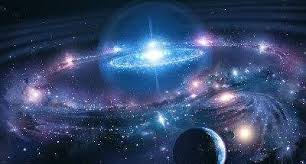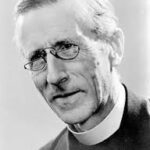
SCIENCE, RELIGION & THE UNIVERSE
Penguin Press has published a book written by Frank Wilczek titled “Fundamentals: 10 Keys to reality.” Wilczek was a 2004 winner of the Nobel prize in physics with two other scientists for his contributions to quantum chromodynamics. It involves a study about the interaction between sub atomic particles. As a scientist he discusses an understanding of the universe as it is known today. In doing so he reviews such things as the nature of time and space, the qualities of matter and energy as well as cosmic history. He applies a spiritual dimension to it all as well. In a review published in the Wall Street journal by Christopher Levenick, the reviewer says:
“The theme of centuries of scientific investigation have revealed a universe so vast as to defy our imagination. The Earth’s radius is about 4000 miles, roughly the distance from New York to Stockholm – or a billionth of a light year “the distance light travels in a year.” The universe, by contrast, stretches across many billions of light years. Time, too, is seemingly abundant. Humankind begins to emerge around 300,000 years ago, so the history of homo-sapiens is but a tiny fraction of our planets roughly 5 billion years.”
Wilczek compares this vastness and abundance to humans. He notes, for example, the human body consists of some 10 octillion atoms (which is a 1 followed by 28 zeros). That’s an amount roughly a billion times larger than the number of stars in the visible universe. He compares that vastness to the abundance of the universe. Wilczek writes the universe is surprisingly uniform and orderly. For example physical laws apply equally in all of the cosmos. At a subatomic level, the elementary particles of matter are the same as on earth and they are the same as in the farthest galaxies. Furthermore, only five elementary particles – electrons, photons, gluons and two types of quarks make up the basic elementary particles that are composed in all of the matter we experience in our day-to-day lives.
From this perspective, Wilczek notes that our ordinary views about the physical world fail to grasp in proper perspective matter and energy either at the smallest or the largest scale. He says that in order to understand either atoms or  astronomy we have to have an understanding of the reality of the what makes up our universe as well as us as human beings. Wilczek writes that this calls for rebirth in a another perspective that has is a spiritual perspective of all of this. He says:
astronomy we have to have an understanding of the reality of the what makes up our universe as well as us as human beings. Wilczek writes that this calls for rebirth in a another perspective that has is a spiritual perspective of all of this. He says:
“In studying how the world works, we are studying how God works, and thereby learning what God is. In that spirit we can interpret the search for knowledge is a form of worship and our discoveries as revelations.”
He views this idea of spiritual sensibility from the perspective of having been raised a Catholic, but describes himself as the pantheist. In his view the universe is identical to the divine. There is no distinction between God and the cosmos. He goes on to say: “Why not, break the supposed conflicts between art and science or philosophy and science or religion A and religion B or religion and science?”
It brought to my mind the writings and teachings of Pierre Teilhard de Chardin S.J (1881-1955) He was a French Jesuit priest, a scientist, paleontologist, theologian and philosopher. He was famous for his involvement in the discovery of the Peking Man and his extensive writing and teaching regarding God and the universe. He was known for his theory that man is evolving, mentally and socially, toward a final spiritual unity. Due to his views, he was exiled to China and prohibited from publishing his views by the Jesuit order and Vatican during his lifetime. He viewed the universe as being in an evolutionary process which was constantly moving towards a state of greater complexity and higher levels of consciousness. For Teilhard the origin of life on earth and the progression of human consciousness or what he called “critical points.” He did not consider a division between humanity, animals or matter. He saw the world as a single evolving entity linked together in a web of mutually interconnected ways towards Christ and a final fulfillment. He summarized his views this way:
1. I believe the universe is in evolution
2. I believe that evolution proceeds towards a spiritual point or Omega point
3. I believe that the spiritual is fully realized in a form of a personality.
4. I believe that the supremely personal is the universal Christ.
God, for Teilhard, was not an outsider – a clock-winder God who created the universe and then let it run itself, distant and remote – but a creative God. He saw a God of becoming within the whole cosmos, a universe which has been growing and developing during the billions of years since the the beginning of creation. He saw Christ’s presence in the form of love as the energy that moves creation forward, a process that has not yet come to its complete fulfillment because the process of evolution and the expansion of the universe continue. He saw God in all of nature and the universe.
Wilczek’s perspective of a spiritual connection between living beings and matter which make up the universe is compatible with Teilhard’s view. Their viewpoint is consistent with the explanation for a universe as orderly and complex as ours to have come into existence by the hand of a higher power we call God. Theologian Thomas Aquinas, in the Summa Theologica offered what are known as “five ways” or “five proofs” for the existence of God. The fifth proof was based upon the complex design of the universe. The same reason noted by Wilczek and relied on by Teilhard. Aquinas argued that all things have an order or arrangement that leads them to a particular goal. Because the order of the universe cannot be the result of chance, design and purpose must be at work. This implies divine intelligence on the part of the designer. That person Aquinas argued is God. Isaac Newton said it another way: “Gravity explains the motions of the planets, but it cannot explain who sets the planets in motion. But, Edwin Conklin the American biologist noted for his studies of human evolution has probably said it best: “The probability of life originating from accident is comparable to the probability of the Unabridged Dictionary resulting from an explosion in a printing factory.”
The next time you look at the stars take a moment to reflect on these ideas about God and the mystery of the universe.
